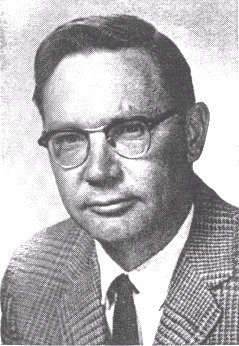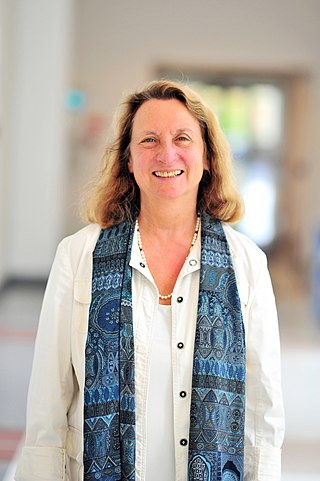Related Research Articles

An unidentified flying object (UFO), or unidentified anomalous phenomenon (UAP), is any perceived aerial phenomenon that cannot be immediately identified or explained. Upon investigation, most UFOs are identified as known objects or atmospheric phenomena, while a small number remain unexplained.

Ufology is the investigation of unidentified flying objects (UFOs) by people who believe that they may be of extraordinary origins. While there are instances of government, private, and fringe science investigations of UFOs, ufology is generally regarded by skeptics and science educators as an example of pseudoscience.
The extraterrestrial hypothesis (ETH) proposes that some unidentified flying objects (UFOs) are best explained as being physical spacecraft occupied by extraterrestrial intelligence or non-human aliens, or non-occupied alien probes from other planets visiting Earth.

The American Institute of Aeronautics and Astronautics (AIAA) is a professional society for the field of aerospace engineering. The AIAA is the U.S. representative on the International Astronautical Federation and the International Council of the Aeronautical Sciences. In 2015, it had more than 30,000 members among aerospace professionals worldwide.

Josef Allen Hynek was an American astronomer, professor, and ufologist. He is perhaps best remembered for his UFO research. Hynek acted as scientific advisor to UFO studies undertaken by the U.S. Air Force under three projects: Project Sign (1947–1949), Project Grudge (1949–1951) and Project Blue Book (1952–1969).
Burkhard Heim was a German theoretical physicist known for the creation of a unified field theory called Heim theory. He was particularly interested in the application of his theory to the development of hyperspace travel.

Eugene Newman Parker was an American solar and plasma physicist. In the 1950s he proposed the existence of the solar wind and that the magnetic field in the outer Solar System would be in the shape of a Parker spiral, predictions that were later confirmed by spacecraft measurements. In 1987, Parker proposed the existence of nanoflares, a leading candidate to explain the coronal heating problem.

Jacques Fabrice Vallée is an Internet pioneer, computer scientist, venture capitalist, author, ufologist and astronomer currently residing in San Francisco, California and Paris, France.
Paul D. Spudis (1952–2018) was an American geologist and lunar scientist. His specialty was the study of volcanism and impact processes on the planets, including Mercury and Mars.

Edward Uhler Condon was an American nuclear physicist, a pioneer in quantum mechanics, and a participant during World War II in the development of radar and, very briefly, of nuclear weapons as part of the Manhattan Project. The Franck–Condon principle and the Slater–Condon rules are co-named after him.

James Edward McDonald was an American physicist. He is best known for his research regarding UFOs. McDonald was a senior physicist at the Institute for Atmospheric Physics and a professor of meteorology at the University of Arizona in Tucson.

The Condon Committee was the informal name of the University of Colorado UFO Project, a group funded by the United States Air Force from 1966 to 1968 at the University of Colorado to study unidentified flying objects under the direction of physicist Edward Condon. The result of its work, formally titled Scientific Study of Unidentified Flying Objects, and known as the Condon Report, appeared in 1968.

William Kenneth Hartmann is a noted planetary scientist, artist, author, and writer. He was the first to convince the scientific mainstream that the Earth had once been hit by a planet sized body (Theia), creating both the Moon and the Earth's 23.5° tilt.

The Society for Scientific Exploration (SSE) is a group committed to studying fringe science. The opinions of the organization in regard to what are the proper limits of scientific exploration are often at odds with those of mainstream science. Critics argue that the SSE is devoted to disreputable ideas far outside the scientific mainstream.
Edward W Ng was an American applied mathematician who had also held the positions of senior scientist, senior engineer and technical manager in the U.S. Space Program. He is noted for his broad variety of mathematical applications in space science and engineering. He has also contributed conscientiously in the spin-off of technology from the space program, with applications in such diverse subjects as Bose–Einstein distribution in mathematical physics, symbolic and algebraic computation, computational physics and biomedical research.

Elaine Surick Oran is an American physical scientist and is considered a world authority on numerical methods for large-scale simulation of physical systems. She has pioneered computational technology to solve complex reactive flow problems, unifying concepts from science, mathematics, engineering, and computer science in a new methodology. An incredibly diverse range of phenomena can be modeled and better understood using her techniques for numerical simulation of fluid flows, ranging from the tightly grouped movements of fish in Earth's oceans to the explosions of far-flung supernovae in space. Her work has contributed significantly to the advancement of the engineering profession.

Dr. Martin C. Weisskopf until his retirement from NASA in at the end of May, 2022, was project scientist for NASA's Chandra X-ray Observatory and Chief Scientist for X-ray Astronomy in the Space Sciences Department at NASA's Marshall Space Flight Center in Huntsville, Alabama. He was also the Principal Investigator of the Small Explorer mission the Imaging X-ray Polarization Explorer (IXPE).

Rita M. Sambruna Commander OMRI (Hon) is an Italian-American astrophysicist and is the Deputy Director of the Astrophysics Science Division at National Aeronautics and Space Administration's (NASA) Goddard Space Flight Center. From September 2022 to May 2023, she was the Acting Deputy Director of the Science Exploration Directorate at Goddard. Rita held the Clare Boothe Luce Professorship in Physics and Astronomy at George Mason University in 2000-2005.
References
- ↑ American Men & Women of Science: Q-S . Thomson Gale. 2003. p. 1057. ISBN 978-0787665296.
- ↑ "Peter Sturrock: Emeritus Professor of Applied Physics". Stanford, CA: Stanford University . Retrieved 20 May 2013.
- ↑ "Arctowski Medal". Section: Recipients: National Academy of Sciences. 2013. Archived from the original on 26 January 2013. Retrieved 20 May 2013.
- ↑ "How to Quantify the Shakespeare Debate". Stanford Magazine. 42 (3): 29. May–June 2013. Retrieved 19 May 2013.
- ↑ "AAS Fellows". AAS. Retrieved 30 September 2020.
- ↑ Salisbury, David F. (1 July 1998). "UFO study causes media sensation: 7/1/98". Stanford Report. Stanford, CA: Stanford University . Retrieved 20 May 2013.
- ↑ Kuettner, Joachim P. (November 1970). "UFO - An Appraisal of the Problem: A Statement by the UFO Subcommittee of the AIAA". Aeronautics and Astronautics: 49. Archived from the original on 12 December 2000. Retrieved 20 May 2013.
- ↑ Sturrock, Peter (May 1974). "UFO Reports from AIAA (American Institute of Aeronautics and Astronautics) Members". Aeronautics and Astronautics. Retrieved 20 May 2013.
- ↑ Sturrock, Peter. "Report on a Survey of the Membership of the American Astronomical Society Concerning the UFO Phenomenon - Summary" . Retrieved 20 May 2013.
- ↑ Michael D. Lemonick/Gainesville (24 May 2005). "Science on the Fringe". Time magazine. Archived from the original on 25 May 2005. Retrieved 2 June 2008.
- ↑ "Physical Evidence Related to UFO Reports". Archived from the original on 18 April 2006. Retrieved 30 April 2006.